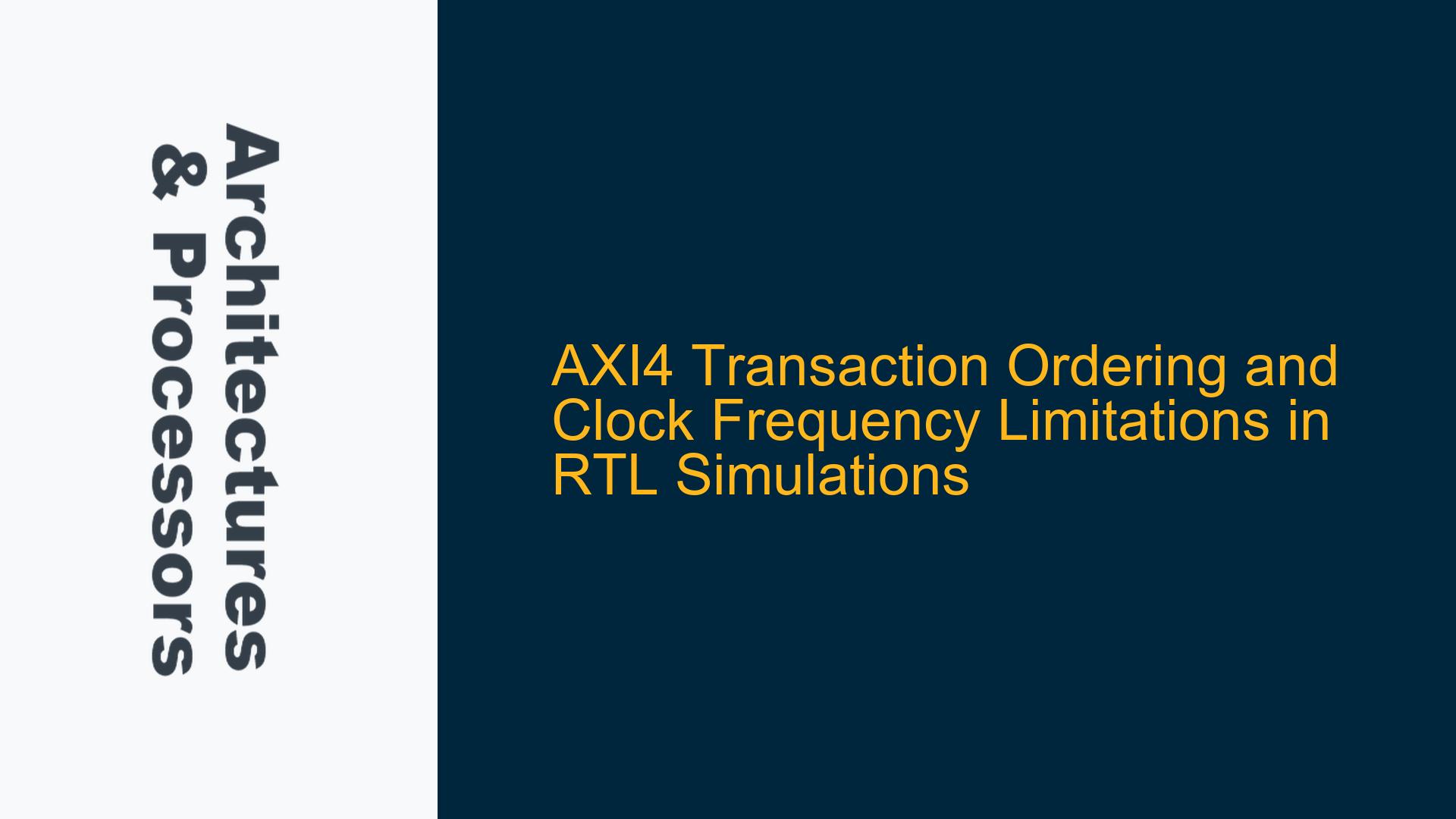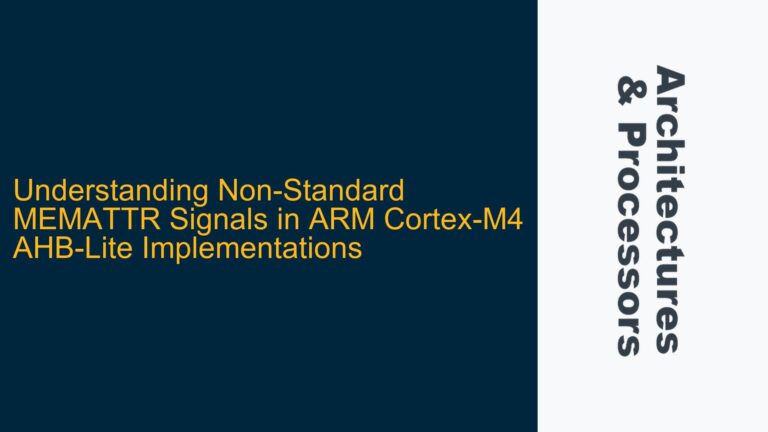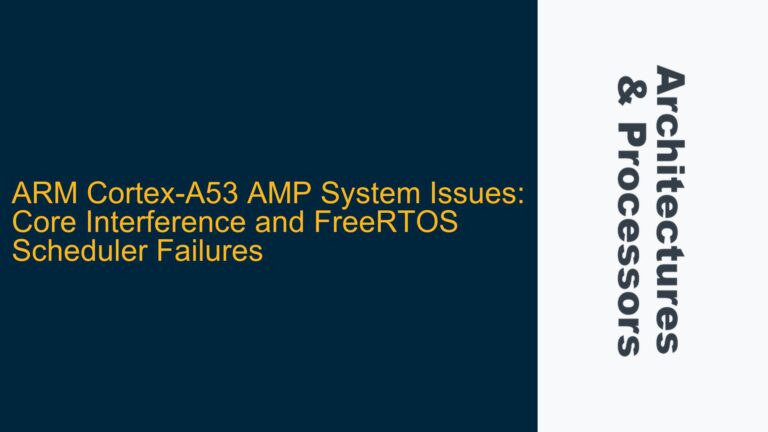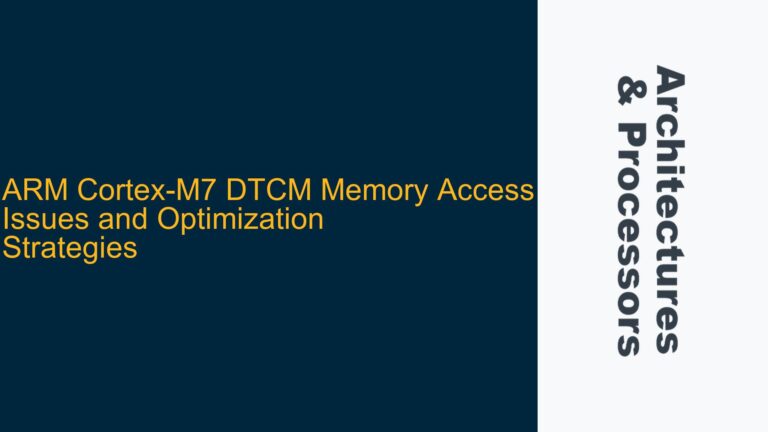AXI4 Protocol Behavior During Write Address and Data Transfers
The AXI4 protocol is designed to handle multiple outstanding transactions, ensuring that write addresses and corresponding data are processed in a specific order. When a master initiates a write transaction, the address is sent on the AW channel, and the data is sent on the W channel. The protocol mandates that the write data for a specific address must be received by the subordinate (slave) before the next address’s data can be accepted. This ensures that there is no interleaving of write data for different addresses.
In the scenario described, the master sends three write addresses: 0x15, 0x25, and 0x35. The first address, 0x15, is accepted by the subordinate, and the corresponding data is expected to follow. However, before the data for 0x15 is fully transferred, the master sends the next address, 0x25, and its corresponding data. According to the AXI4 protocol, the subordinate must wait for the data for 0x15 to complete before it can accept the data for 0x25. This means that the address 0x25 remains pending until the data for 0x15 is fully transferred.
The AXI4 protocol allows for multiple outstanding transactions, meaning that the subordinate can accept multiple addresses before the corresponding data is transferred. However, the data for each address must be transferred in the order the addresses were received. This ensures that there is no data corruption or misalignment between addresses and their corresponding data.
In the waveform provided, the address 0x15 is accepted first, followed by 0x25. The data for 0x15 is then transferred, and once that is complete, the data for 0x25 can be transferred. This behavior is consistent with the AXI4 protocol and ensures that the data is correctly aligned with the addresses.
Impact of Clock Frequency on AXI4 Transaction Capture in RTL Simulations
The clock frequency plays a critical role in the capture and processing of AXI4 transactions in RTL simulations. In the described scenario, the simulation was run with different clock periods: 10ns, 4ns, and 2ns. At a 10ns clock period, all three addresses (0x15, 0x25, and 0x35) were captured correctly. However, at a 4ns clock period, the middle address (0x25) was not captured, and at a 2ns clock period, the simulation failed to capture the address correctly.
The failure to capture the address at higher clock frequencies is not due to the AXI4 protocol itself but rather due to the limitations of the RTL design and the simulation environment. The AXI4 protocol does not impose a maximum clock frequency; instead, the maximum frequency is determined by the complexity of the design, the silicon process, and the synthesis constraints applied to the design.
In RTL simulations, the clock frequency affects the timing of signal propagation and the sampling of inputs. At higher clock frequencies, the time available for signal propagation between clock cycles is reduced. If the combinatorial paths in the design are too long, the signals may not have enough time to propagate and stabilize before the next clock edge, leading to incorrect sampling of inputs.
In the described scenario, the RTL design likely has combinatorial paths that are too long to support the higher clock frequencies. When the clock period is reduced to 4ns or 2ns, the signals do not have enough time to propagate through these paths, resulting in the failure to capture the middle address (0x25). This is not a limitation of the AXI4 protocol but rather a limitation of the RTL design and the simulation environment.
To address this issue, the RTL design must be optimized to reduce the length of combinatorial paths. This can be achieved through techniques such as pipelining, where additional registers are inserted to break up long combinatorial paths. By reducing the length of these paths, the design can support higher clock frequencies without compromising the correct capture of AXI4 transactions.
Functional Simulation Delays and Their Impact on AXI4 Transaction Timing
Functional simulation delays, such as the delay introduced by flip-flops (FFs), can significantly impact the timing of AXI4 transactions in RTL simulations. In the described scenario, the RTL design includes a functional simulation delay of one flip-flop delay. This delay affects the timing of signal propagation and the sampling of inputs, particularly at higher clock frequencies.
At a 10ns clock period, the functional simulation delay is small relative to the clock period, allowing the signals to propagate and stabilize before the next clock edge. As a result, all three addresses (0x15, 0x25, and 0x35) are captured correctly. However, at a 4ns clock period, the functional simulation delay becomes more significant relative to the clock period. The signals may not have enough time to propagate through the flip-flop and stabilize before the next clock edge, leading to the failure to capture the middle address (0x25).
The impact of functional simulation delays on AXI4 transaction timing can be analyzed by examining the timing paths in the RTL design. Each flip-flop introduces a delay that must be accounted for in the overall timing analysis. If the cumulative delay of the flip-flops and combinatorial logic exceeds the available time between clock edges, the design will fail to capture the correct signals.
To mitigate the impact of functional simulation delays, the RTL design must be carefully analyzed to identify and optimize critical timing paths. This can be achieved through techniques such as retiming, where flip-flops are repositioned to balance the delays across different paths. Additionally, the use of faster flip-flops or more efficient logic synthesis can help reduce the overall delay and improve the timing margin.
In conclusion, the failure to capture the middle address (0x25) at higher clock frequencies is not due to the AXI4 protocol but rather due to the limitations of the RTL design and the functional simulation delays. By optimizing the RTL design and reducing the impact of functional simulation delays, the design can support higher clock frequencies and correctly capture AXI4 transactions.
Implementing AXI4-Lite with ID Reflection for Enhanced Transaction Tracking
The AXI4-Lite protocol is a simplified version of the AXI4 protocol, designed for lightweight and low-complexity systems. Unlike AXI4, AXI4-Lite does not support burst transactions, out-of-order transactions, or the use of transaction IDs (AWID, ARID, etc.). However, in some cases, it may be desirable to add ID reflection to an AXI4-Lite interface to allow it to function in a system that uses full AXI4 interfaces.
ID reflection involves adding ID ports to the AXI4-Lite subordinate so that it can return the ARID value on the RID port and the AWID value on the BID port. This allows the AXI4-Lite subordinate to be connected to a full AXI4 interface, but with certain restrictions. Specifically, the AXI4 interface must be aware that the AXI4-Lite subordinate can only handle single-beat transactions (bursts of length 1), full data bus width accesses, and no complex memory types or exclusive transfers.
In the described scenario, the user wants to use IDs in an AXI4-Lite system to track which address corresponds to which data. While AXI4-Lite does not natively support IDs, ID reflection can be implemented to achieve this functionality. By adding ID ports to the AXI4-Lite subordinate, the system can track the transaction IDs and ensure that the correct data is associated with the correct address.
However, it is important to note that AXI4-Lite transactions must still be performed in order, meaning that the use of IDs does not provide the same level of flexibility as in full AXI4. In AXI4-Lite, the order of transactions is strictly maintained, and the ID is primarily used for compatibility with full AXI4 interfaces rather than for out-of-order transaction handling.
To implement ID reflection in an AXI4-Lite subordinate, the following steps can be taken:
-
Add ID Ports to the AXI4-Lite Subordinate: The AXI4-Lite subordinate should be modified to include ARID and AWID input ports and RID and BID output ports. These ports will be used to pass the transaction IDs between the AXI4-Lite subordinate and the full AXI4 interface.
-
Reflect IDs in Responses: When the AXI4-Lite subordinate generates a read response (RRESP) or a write response (BRESP), it should include the corresponding ARID or AWID value in the RID or BID port, respectively. This ensures that the full AXI4 interface can correctly associate the response with the original transaction.
-
Restrict Transaction Types: The AXI4-Lite subordinate should only accept single-beat transactions (bursts of length 1) and should reject any transactions that violate the AXI4-Lite protocol. This ensures that the AXI4-Lite subordinate remains compatible with the full AXI4 interface while adhering to the limitations of the AXI4-Lite protocol.
-
Handle Read-After-Write Hazards: Since AXI4-Lite does not support out-of-order transactions, the system must ensure that read transactions are issued only after the corresponding write transactions have completed. This can be achieved by waiting for the BRESP response before issuing a read transaction.
By implementing ID reflection in an AXI4-Lite subordinate, the system can achieve a level of transaction tracking similar to that of full AXI4, while still adhering to the simplicity and limitations of the AXI4-Lite protocol. This approach allows for greater flexibility in system design and can be particularly useful in mixed AXI4/AXI4-Lite environments.
Conclusion
The AXI4 protocol is a powerful and flexible interface for high-performance systems, but it requires careful consideration of transaction ordering, clock frequency, and functional simulation delays to ensure correct operation. In the described scenario, the failure to capture the middle address (0x25) at higher clock frequencies is not due to the AXI4 protocol but rather due to the limitations of the RTL design and the functional simulation delays. By optimizing the RTL design and reducing the impact of functional simulation delays, the design can support higher clock frequencies and correctly capture AXI4 transactions.
Additionally, the use of ID reflection in AXI4-Lite systems can provide a level of transaction tracking similar to that of full AXI4, while still adhering to the simplicity and limitations of the AXI4-Lite protocol. This approach allows for greater flexibility in system design and can be particularly useful in mixed AXI4/AXI4-Lite environments.
In summary, the key to successful AXI4 implementation lies in understanding the protocol’s behavior, optimizing the RTL design for timing, and carefully managing functional simulation delays. By addressing these factors, designers can ensure that their AXI4-based systems operate correctly and efficiently, even at higher clock frequencies.






